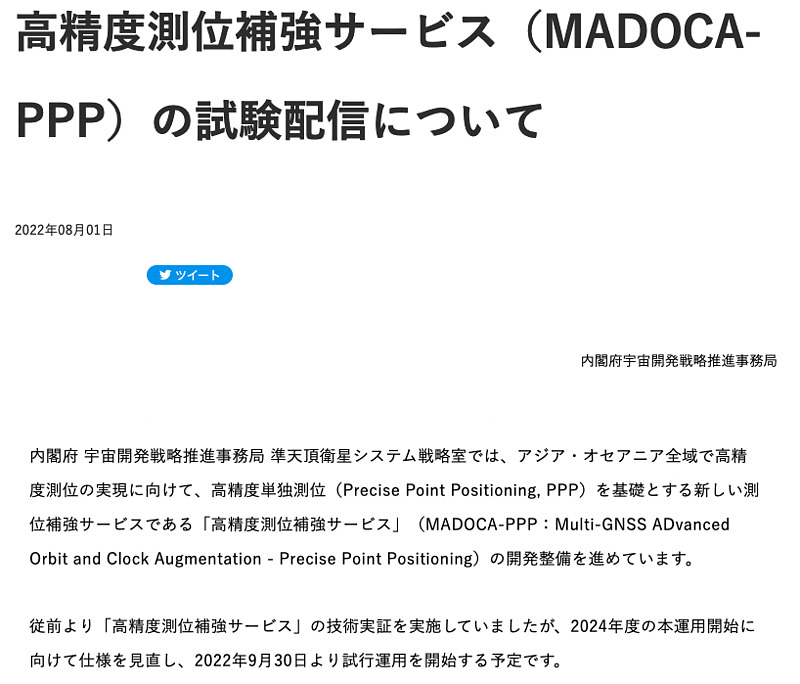Quasi-zenith satellite's new MADOCA trial delivery schedule
The demonstration test MADOCA (Multi-GNSS Advanced Demonstration tool for Orbit and Clock Analysis) is currently being broadcast from the L6E signal of the Quasi-Zenith Satellite Michibiki.
According to the announcement on the Michibiki website, “Test transmission of MADOCA-PPP,” a new format of MADOCA (MADOCA-PPP) will be broadcast from August 18th to 31st. Trial operation will begin on September 30, and full-scale operation will begin in 2024.
The MADOCA-PPP specification (IS-QZSS-MDC-001) has already been published. Even QZS L6 Tool should be able to recognize and decode this MADOCA-PPP. I would like to compare the number of satellites to be augmented and the satellites to be augmented compared to CLAS and the current MADOCA.
For example, if the raw data of the signal reception module HD9310 that can receive L6E signals is set to be output to the host name rpi2b and port number 2005, it is expected that MADOCA-PPP can be decoded as follows:
nc 192.168.0.1 2005 | ./alst2qzsl6.py -l | ./qzsl62rtcm.py
I would like to implement the part that converts this to RTCM 3 messages and make it possible to perform precise point positioning with RTKLIB.
The specification IS-QZSS-SAS (signal authentication service), which defines the format of the signal authentication message QZNMA (quasi-zenith satellite navigation message authentication), has not yet been published. The announcement says “An invalid value is set for the location where it is stored.” Since QZNMA is delivered in the middle of MADOCA-PPP delivery (see page 8 of IS-QZSS-MDC-001), there is a reference to QZNMA in MADOCA-PPP.
In addition, the announcement says, “Current MADOCA (demonstration signal) cannot be used during test distribution.” Current MADOCA distributed by GPAS with L6E signals may be replaced by this MADOCA-PPP in the future.
